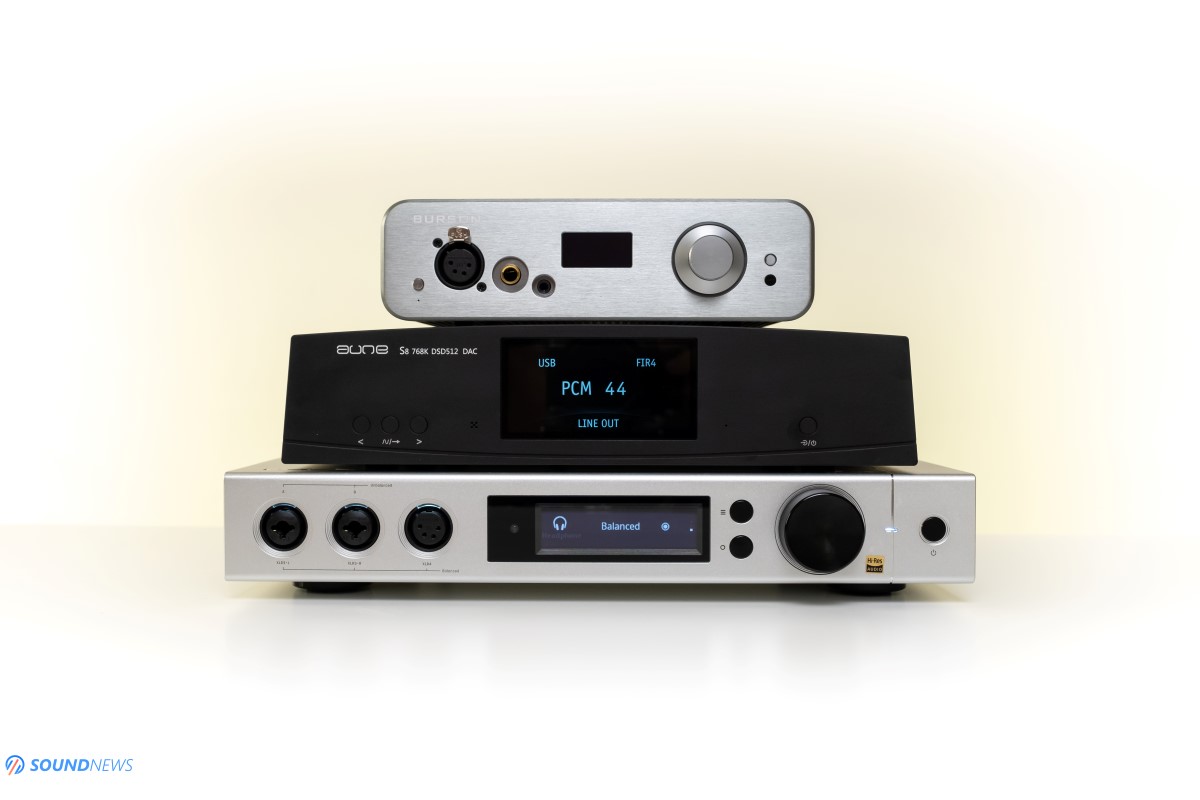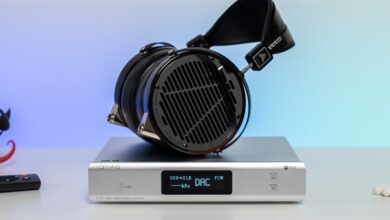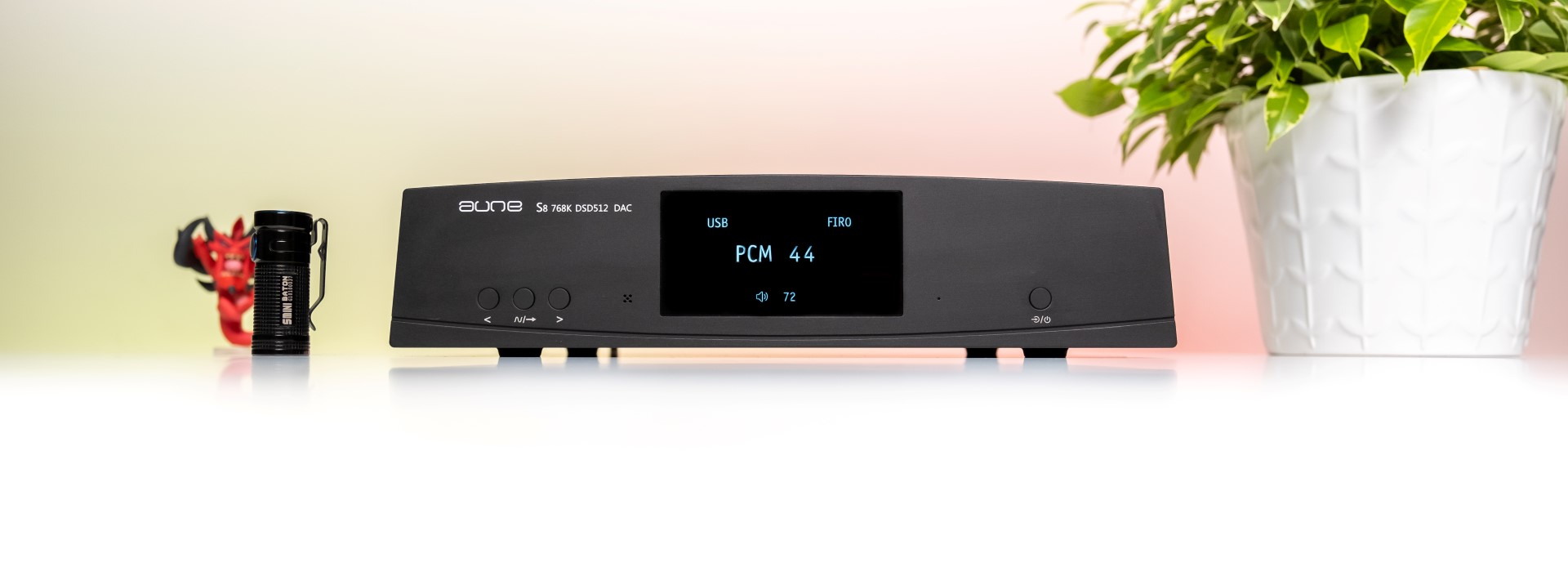
My Video Review:
I’m a curious person by nature and when a music making machine lands on my table, I usually try to understand it first. I would pop its case and I will follow the signal path from inputs to outputs. I would always seek limitations and compromises put in place mostly by cost, development time or simply by lack of knowledge. In amplifier design of any kind, be it a line-amplifier, integrated or power amplifier, it is a lot easier to understand what makes them tick, but in digital to analog converters it is like looking at a Picasso painting and trying to understand it. I like testing DACs; it seems that I have a small fetish for everything related to them. Main reason is that digital to analog converters are considerably more complicated on the inside, as you need to deal with multiple things in the digital and analog domains and make all that work in harmony.
There are quite a lot of DAC manufacturers coming from China lately, but when it comes to high-performance audio, only few of them can be taken seriously. I do believe Aune Audio has all the right ingredients to have your attention as they have a strong brand identity, high quality craftsmanship, they have dealers all around the world to service their gear and most importantly their products sound good.
For the last few years, they were focused mostly on the affordable Hi-Fi market with a very big push towards head-fi market. However, with their latest releases they are not targeting headphone lovers anymore, but serious Hi-Fi enthusiasts. I’m about their newest statement product: Aune Audio S8 DAC that has few tricks under its sleeve, that no other DAC from there ever came with. It is a simple unit on the outside and a complicated one on the inside. So, let’s check it in a very in-depth way and see how it performs in a speaker and in a headphone-based setup.
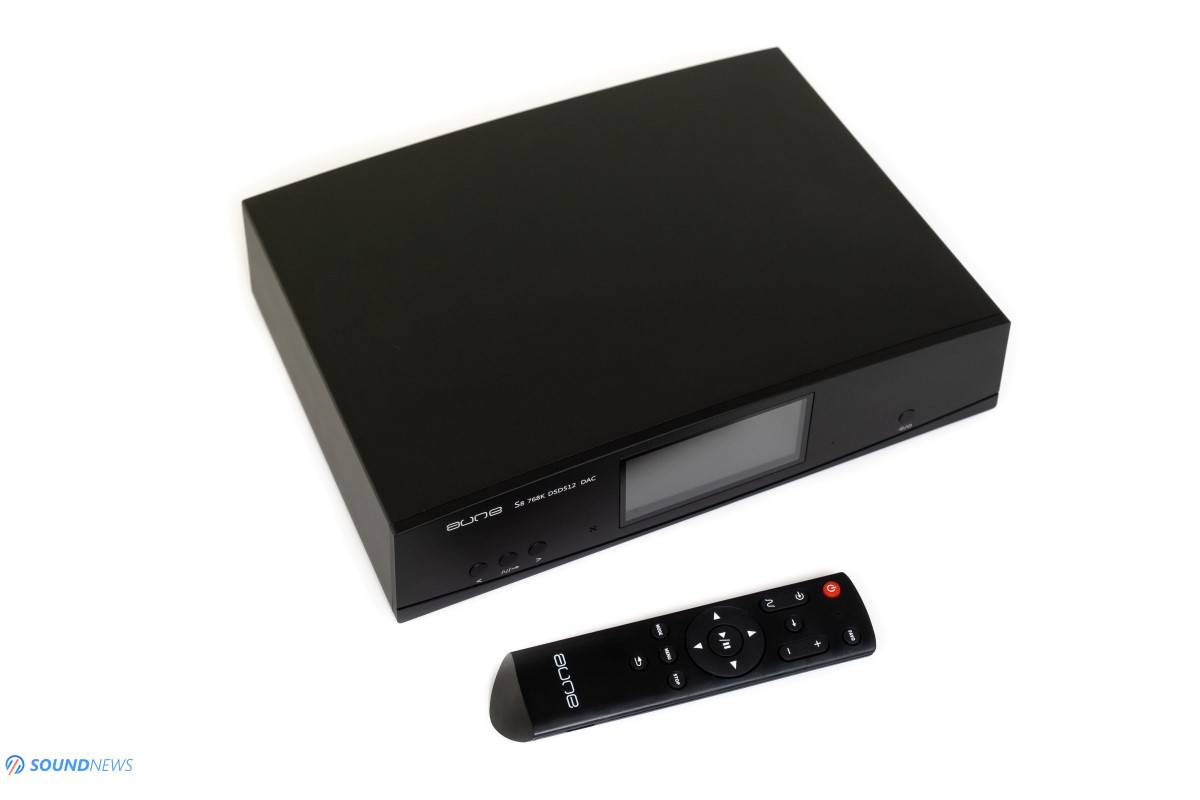
Unboxing
Aune S8 is currently their statement product and that was felt immediately after receiving the package. Of course, it came double boxed and the smaller product box was extremely thick, it’s probably the thickest box I’ve received so far and it should well protect its contents. There is a decent amount of hard foam for protection and in my opinion you can never have too much protection for high-end audio gear. Inside the package you’ll find the unit itself, which was heavier than I expected and, on the right, there is an accessory box which holds: a power cable, a high-quality golden plated USB type-B cable, there is a much-needed matte-black remote control, suggesting that S8 can also work as a Preamp. A black envelope holds a quick start guide, an after sales card and my favorite part…. drum roll…. a Mini-CD!
Unfortunately, I have no way to check its contents as my all my desktop PCs and laptops I’ve used in the last few years lacked an optical drive. Gustard Audio and some xDuoo units are also coming with mini-CDs and sincerely, I really don’t understand why they are doing this. If you are reading this, then you know how to browse a web page, download a user manual or some drivers for your equipment. Luckily, Aune Audio put everything online right here so you could download everything you need. If you are using it with a computer running Windows OS, I recommend downloading and installing its USB drivers first.
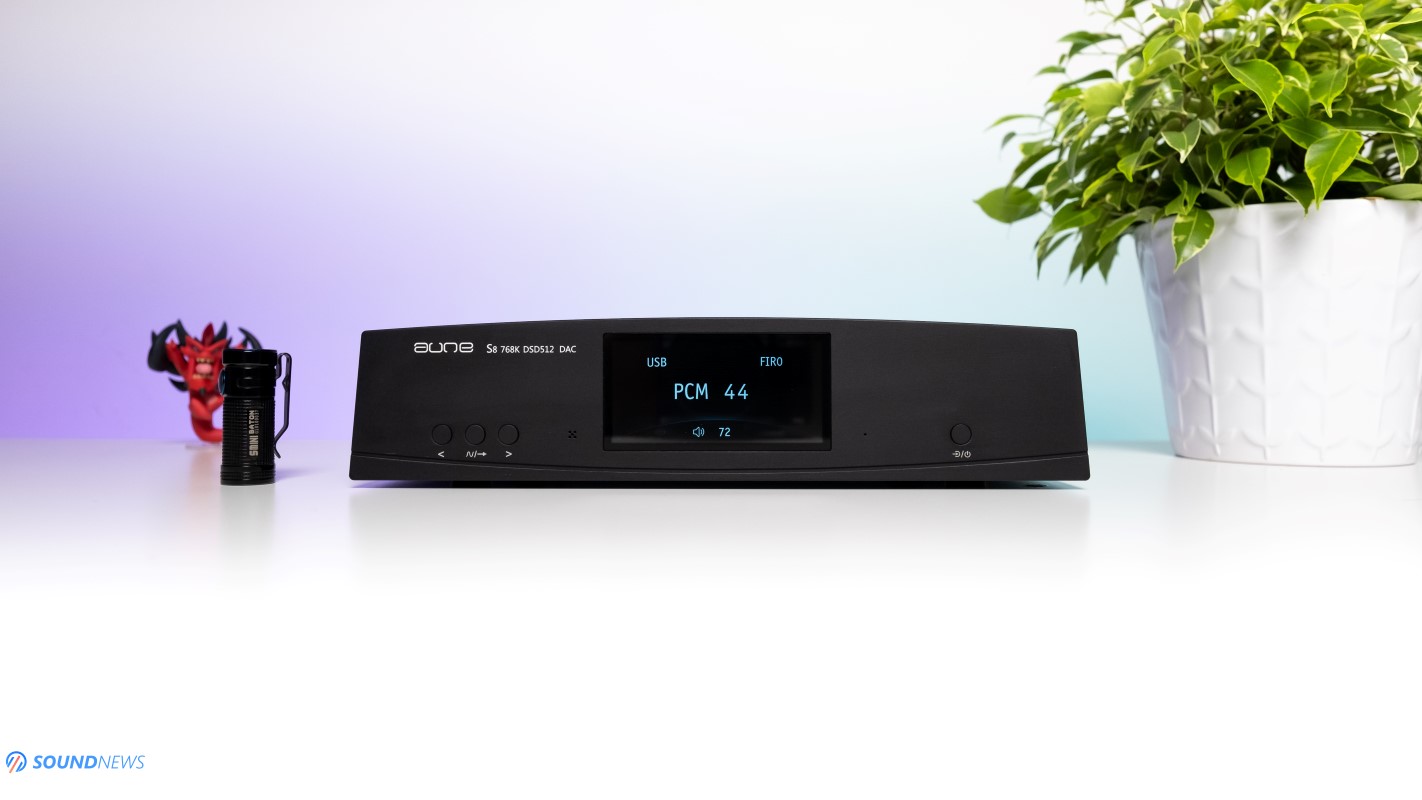
Design & Build Quality
I have already reviewed their S6 PRO and S7 PRO units last year and I was actually surprised by their immaculate build quality. Aune is offering all of them in two color options: matte black and matte silver. I personally like that this surface is not bouncing light for products shots and their displays are dimmed, so I could easier listen to them late night without being distracted.
S8 is built to high standards, everything is secured really tightly, buttons are not wobbling at all, they have a very firm press and are buried deep, so you would not press them accidentally. Aune hid all the screws on the back for a much cleaner look. It simply looks clean, minimalist, with a very high WAF factor, it has elegant looks with an LCD screen exactly in the middle so my OCD friends can sleep tightly at night.
Its aluminum case is milled on a CNC machine, with very tight tolerance numbers, I’ve inspected its case closely and I can’t find flaws or any defects whatsoever. Aune Audio is one of the few manufacturers from China that cares about their looks and build-quality and that can be immediately felt after closely inspecting their unit. Aune didn’t want to go with a boring brick-like case and instead came up with this rounded case on top and with angled side panels, it is quite unique looking that is for sure. S6 PRO and S7 PRO had the same designs and in time I started appreciating their unusual and nonconformist looks.
I’m glad to report that the rubber feet on S8, S5, S6 PRO and S7 PRO are tall enough, so you could easily place them on top of each other. I had my doubts first, but there is actually some free space so air could move freely and cool them down.
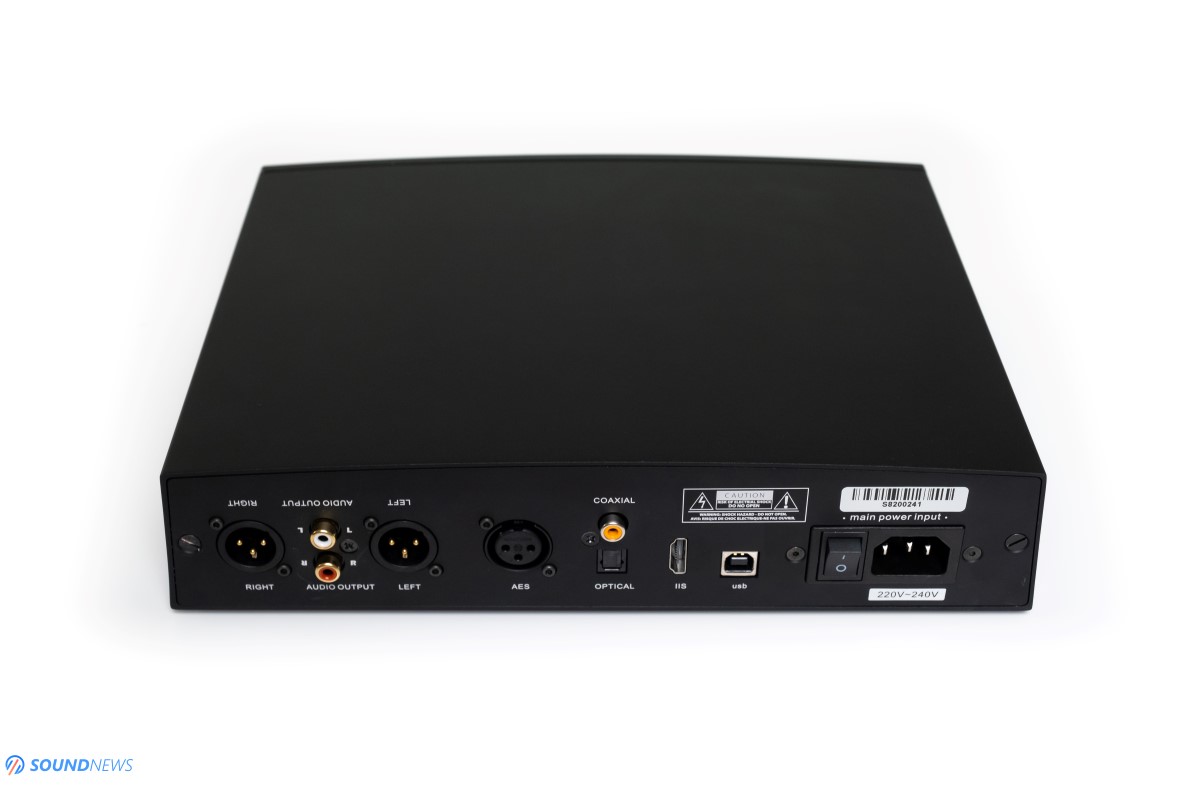
Controls & I/O
Aune S8 has a clean looking front panel where you’ll find a stand-by/select digital input button on the right and a filter and two volume buttons on the left. Do note that when S8 works in pure-DAC mode, the volume buttons would be disabled. In the middle there is a big monochrome LCD screen that will show a lot of important stuff as the selected digital input, the filter, its working mode (LINE OUT or Preamp mode), the sample rate, PCM or DSD Data stream and the volume level if preamp mode is engaged.
On the back, you can spot a wide variety of digital inputs as USB, I2S (that are natively supporting DSD512 and 32 bit/768 kHz PCM files) and the rest as Optical, Coaxial and AES that are limited to DSD-Over-PCM (DoP) DoP128 and 24 bit/384 kHz files with the exception of Optical that is currently the worst digital input that is limited only to DoP64 and 24bit/192 kHz PCM files. S8 is a fully balanced DAC input to output, so besides RCA outputs, it also has a pair of XLR outputs. Both outputs are working at the same time and you could select for a fixed or variable voltage output. I personally like that it has a slightly hotter output of 4.3V instead of industry standard 4V, that works better with my particular preamp and headphone amp (Benchmark HPA4).
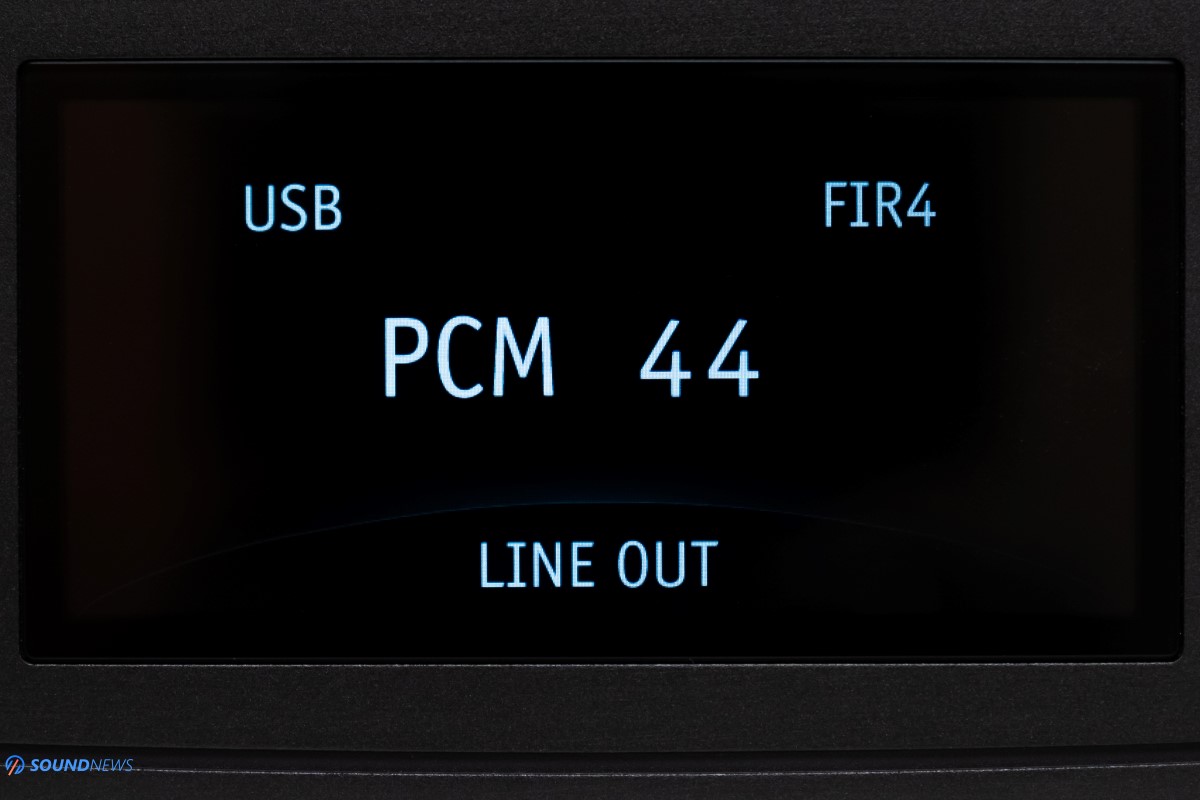
Tech Inside Aune S8
Oh boy, now this is where it gets interesting, it least for me it is. I’m a sucker for complicated digital designs and I believe that S8 can’t be described as your typical ESS-Sabre based delta-sigma (D/S from now on) DAC and here is why.
The quality of the master clock is very important in a high-end DAC, it is the second most important thing after the DAC chip itself, as it controls the timing and the precision of the signal. S8 uses a custom built high-quality DPLL clock generator which is integrated into a jitter reduction architecture. It does not require any Asynchronous Sample Rate Conversion solution to achieve this. Instead of going with an off-the-shelf but high-quality crystal clock as Crystek and Accusilicon are offering, Aune teamed with Titans Audio Lab and designed a custom, femtosecond Low-Phase-Noise PLL clock. I’ve experienced custom clocks in digital audio, Audiobyte HydraVox which I’m using daily has one too, but HydraVox is a $4000 DAC and S8 is considerably less. Of course, the final performance of a DAC can’t be measured only by the quality of its master clock, as everything else in the digital or analog domain is very important too. Titans Audio Lab is not new to this scene, they actually released two years ago a very high-end master clock generator / jitter reducer that is called Helen. By very high-end, I mean a $1500 high-end master clock…that should be easily on the same level with Rubidium Atomic Clocks used in DACs that cost somewhere between $20.000 and 50.000. Aune Audio actually just recently announced their own version, that is called Aune S1C – Master Clock generator that costs only $1399. Of course, the clock inside S8 is much smaller, having a lesser resolution and not as thermally stable and precise like the one inside S1C or Helen, but it is safe to say that it is a very good one, most probably outperforming off-the-shelf clocks from the likes of Crystek, Accusilicon and others.
This is their very first DAC that uses the flagship PRO grade ESS 9038 PRO DAC chip – it is an extremely capable silicon if you know how to fight back all its cons and limitations. My secondary DAC is a Matrix Audio Element X that to this day wasn’t outperformed by any other DAC at any price in terms of details and transparency and it also uses an ESS 9038 PRO as its main engine.
For the first time, Aune put a much bigger importance to its USB implementation compared to other inputs. We all know that USB it is the most common used digital input and I’m very happy for their decision. They put additional two femto-second clocks from Accusilicon, a very good XMOS interface (most probably XU-208) and of course some custom drivers from Thesycon will make sure that S8 will be playing in the big-league via its USB and I2S inputs.
I was unable to open up its case, but I was able to spot an encapsulated linear and regulated toroidal transformer which will be providing clean power to the critical analog and digital circuitry. I’ve spotted about 6 to 8 big electrolytic capacitors for power filtering, so are definitely talking about a very good DAC design that should be taken seriously.

Test Equipment
I spent more time with it in a headphone based-setup, where it was driving either a Benchmark HPA4 or a Flux Labs Acoustics FCN-10 followed by four planar-magnetic headphones: Hifiman Susvara, Audeze LCD-4, Kennerton Wodan and Erzetich Phobos, simply because my headphone setup is considerably more transparent and detailed sounding compared to my speaker setup.
In a loudspeaker setup it worked as a DAC + Pre, powering directly a KECES S300 power amplifier that was driving a pair of Buchardt S400 loudspeakers. Later on, I added a Benchmark HPA4 in the chain working a Preamp and moved the S8 working in pure DAC mode – just to test its preamp capabilities. Enough with the talk, my ears are itching for some music, so let’s hit some ear-drums!

Sound Performance
I. Preliminary Impressions
I will start by saying that in the last 18 months I have tested around ~18 digital sources based on ESS Sabre chipsets and in all that time I have formed a very solid opinion about each one of them. From all those units, only 5 of them were breaking some unwritten rules by having natural harmonics, real textures, without carrying a trace of sharpness and edginess as rest of them had. I still remember returning back some “high-end” ESS-Sabre units, only because they were unable to create magical moments for me. I’ve tried really hard liking some of them, I’ve exchange cables, speakers and headphones and yet I was still searching for more soul and emotions in my music. Emptiness and edginess are last things you want to have in your digital front end, as once tonality is out of the window, nothing can bring back emotions in your music.
Even established manufacturers as Benchmark Media and Mytek were far from what I would call a detailed and natural sounding source that could preserve the finest details, but also refinement and finesse. I wanted to feel the wood while listening to Antonio Vivaldi, I wanted the vocal cords to give me goose bumps while listening to Leonard Cohen and I wanted to feel the grain and perceive smoothness in my older recordings. One of the best ESS-Sabre units remained as my daily driver and that is the Element X of Matrix Audio. It sounded unlike typical ESS-Sabre units as it was both detailed and natural sounding, preserving all the midrange presence, all the bass texture, its layers and sublayers, without ruining its tonal balance with excessive ringing and harsh trebles.
I want to be clear from the start, that Aune S8 is very much part of this brotherhood and from now on I will be mentioning about 6 brave ESS-Sabre DACs that were breaking the boundaries, that were different sounding and that didn’t follow the rules.
When Hifiman Susvara went on my head, I did experience a crazy amount of details, with Audeze LCD-4 some creamy midrange came forward, Erzetich Phobos shown me an extended soundstage and some depth information and Kennerton Wodan were putting me into a relaxed state of mind. S8 properly punched and slammed like a serious ESS Sabre DAC, it shown me clear layers and sub-layers of bass and the trebles while being extremely detailed and extended, were never sharp and bright. I simply experienced all the best traits a high-performance DAC should possess. I was surprised, but only for a short period, it made sense to me as Element X and HydraVox were also using top of the line clock generators (Element X uses the best Crystek clock, Hydravox is a custom design made in-house by Audiobyte) and are also sounding smooth and natural, but also detailed and extremely transparent. Finally, a proper sounding Sabre DAC that would not break the bank.
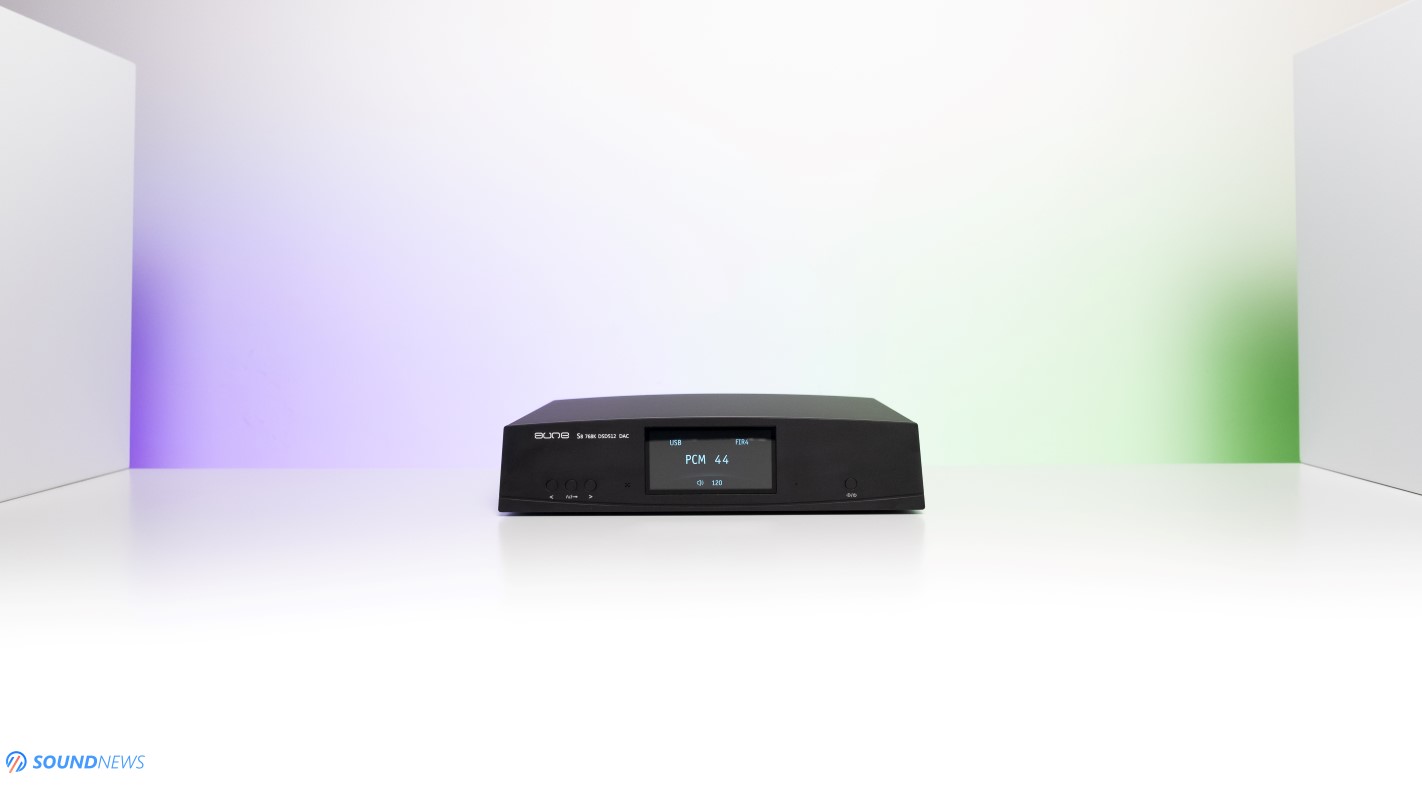
II. Background Noise
It so happens that from all digital creatures of Aune Audio, S8 has the lowest measured noise floor of just 2.5 microVolts – that is tinier than itsy-bitsy tiny, that is über-tiny. As a small detour, Benchmark HPA4 has it at 2.45 microVolts at unity gain (max volume), so when I connected two pairs of ultra-sensitive IEMs as FiiO FA9 and Meze RAI Penta, I wasn’t surprised anymore to hear a dead-silent performance with every single tune.
I don’t own Russian oligarch type of IEMs ($4K+) so I can’t say much about pairing with unobtanium In-Ear-Monitors, but when switching FiiO FA9 to their high-sensitivity mode (16 Ohms and 113 dB/ 1mW of power) it is like looking thought any amplifier and source in a very transparent way. These are pretty much the most sensitive earphones I’ve ever tried in my life. They are so sensitive to noise floor that so far only three headphone amps were dead silent with them and from a plethora of digital sources, very few fiercely rejected that nasty noise floor. With a shaky hand, I went almost max volume with these, I was very careful around my keyboard, as if I would hit the space button, I would be making an ear-drum transplant right now. Luckily that didn’t happen and S8 presented itself bravely, with an immaculate performance, with an inaudible noise floor and without putting anything in between my music and FA9. Even at close to max volume, the total harmonic distortion and noise floor always stood in check and that was a clear sign that S8 has a black background that was felt in silent passages with headphones and speakers alike.
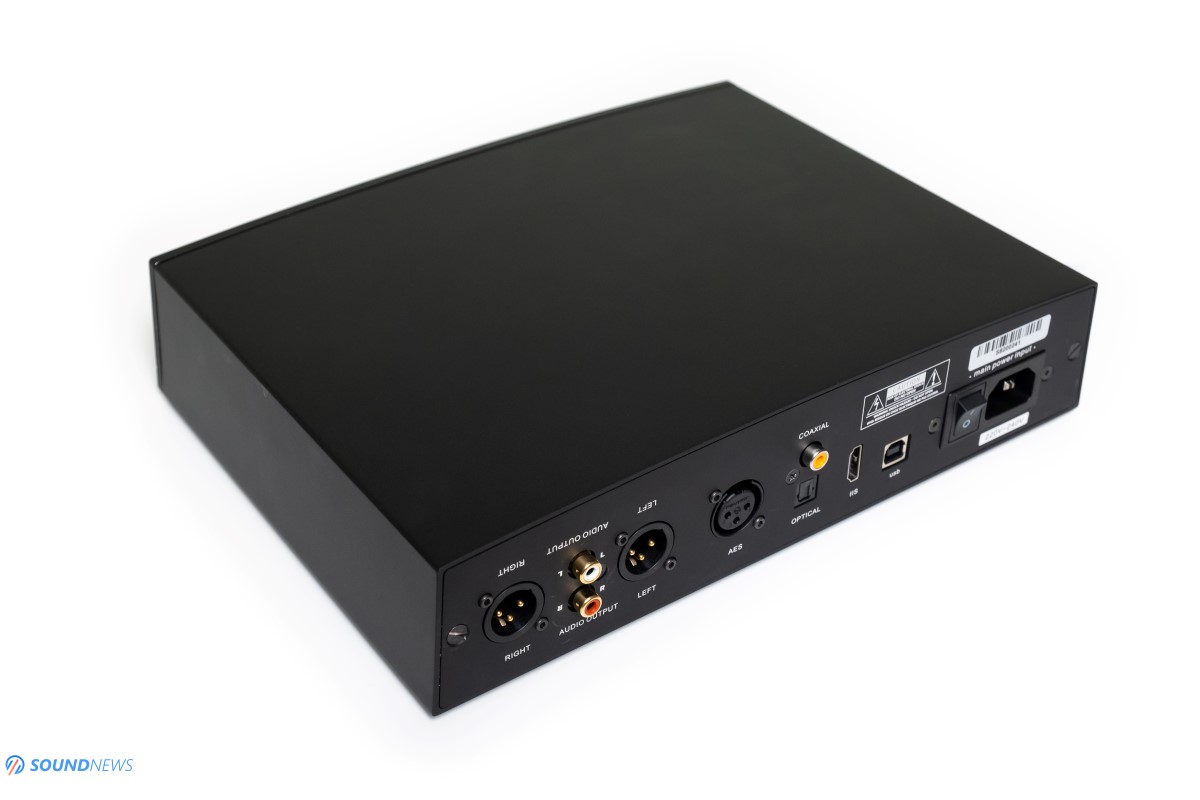
III. Transient Response
It so happens that D/S DACs, but especially ESS-Sabre based DACs are very good when it comes to things like acceleration, speed and braking. Of course, I’m about the transient response and decay of the notes. The fastest driver I ever listened to is still the Hifiman Susvara, so I will be doing this test mostly with them on my head. I want to outline that most of the work will be doing the amplifier that will be driving these headphones, but still…a lazy sounding DAC could easily damage the outcome. I’ve heard lazy sounding DACs in the past and I can spot them pretty easily with the right gear and music.
While I’m not an avid Marilyn Manson listener, its Killing Strangers track (Tidal / Spotify) is among the best ones in testing the impact and slam capabilities of any audio component. Sure enough, the first seconds of this song felt visceral and extremely hard slamming…so much so, that I wanted to lower the volume after few seconds of non-stop ear-drum pounding. Thor’s hammer slam and impact are definitely present in this one, I’m not hearing any kind of degradations and in this regard, my statement DACs are sounding pretty much the same. The big drum is simply head shaking, it is almost painful after a while. Try it for yourself and if your gear is up to the task – it should be something truly special.
While listening to Spitfire by Infected Mushroom (Tidal / Spotify) at the 0:55 second mark the bass starts pulsating like a machine-gun, use a slower acoustic chain and all that would sound like an ugly blob of muddy bass. This part is incredibly fast, it reaches 25 Hz so few speakers might have some trouble in here, it decays in the same fashion and I simply started tapping my foot with a big smile on my face. I know that a lot of you don’t care much about this chapter, but it’s extremely important. Even while listening to slower paced jazz and blues, you need to have a perfect timing and decay of the notes, otherwise it becomes un-natural sounding like something is pressing the brake pedal.
As far as D/S DACs go, especially those based on ESS Sabre chipsets with linear transformers and with a decent number of capacitors to store power for instantaneous dynamics – are pretty much the definition of fast executed notes, of hard slams, of head-bangs and toe taps. There is no other way in putting it that Aune S8 knows how to land a punch and decay everything at the right moment.
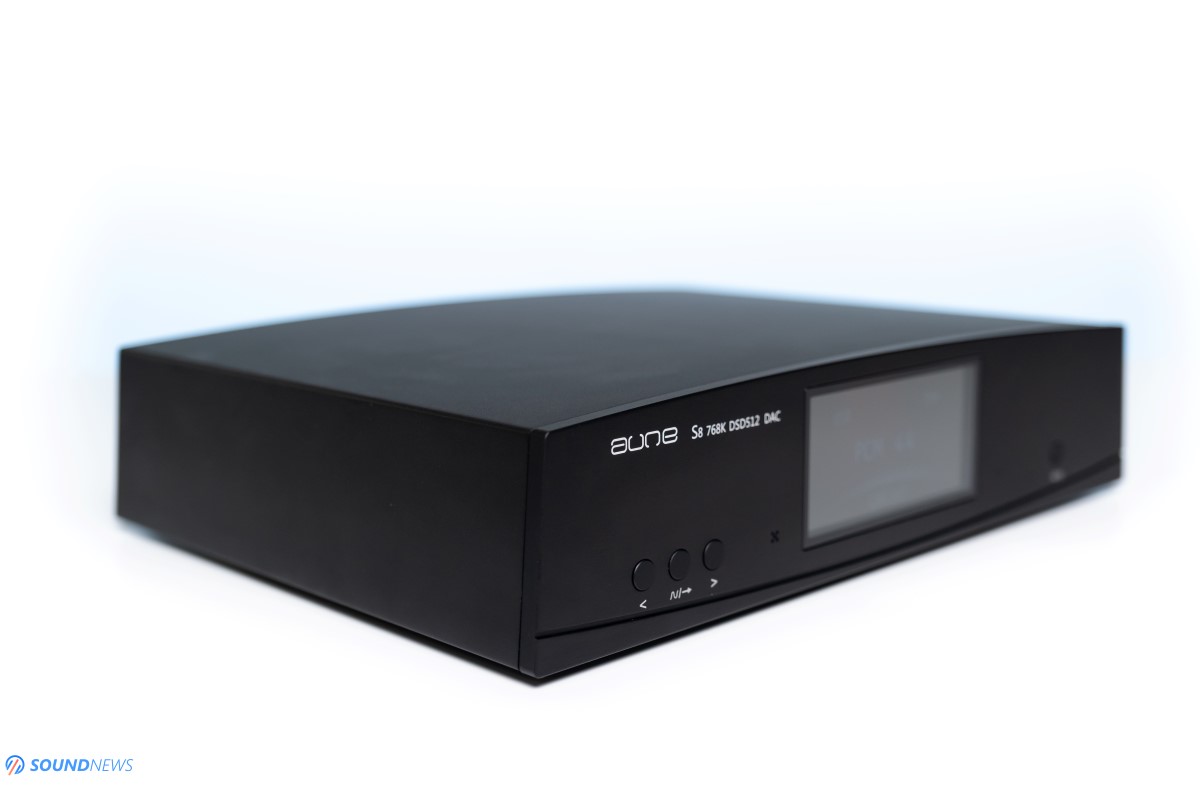
IV. Resolution & Transparency
I have difficulties switching to a high-performance R2R DAC, because while they have everything a music lover could possibly desire, they still can’t approach the transparency level and detail retrieval that is coming even for mid-range D/S DACs like Topping D90 or Gustard A22 and I centennially feel that Aune S8 is part of this group too. S8 is a detailed sounding unit, with it all macro and micro-details are simply put on a plate and you will need to decide to look at them or not. That is precisely why a D/S DAC will always be on my table no matter what, they will extract the smallest nuances in your music, they will work as a microscope and if needed they will show how good or bad is the rest of your acoustic chain.
I can definitely hear loud and clear how Tom Morello in pushing the pedal of its guitar amp on Bulls On Parade at 02:58 mark (Tidal / Spotify), that is not a micro-detail anymore, it became a macro-detail that is very easy to spot. I’ve heard an artist gently touching his violin on Concerto No. 2 In G Minor – Allegro Non Molto (Vivaldi – The Four Season by Chesky Records) on the 3 minute mark – that detail is so tiny that most of the digital sources will not render that minuscule air moving around.
Imaginary Appalachia by Colter Wall (Tidal / Spotify) is a decent record with a pretty high dynamic range and with a clever positioning of all the notes around the listener, but the noise floor is pretty high with this one. With an R2R unit, this is a non-issue as it will be smoothing out all the grain and pot-holes in your music. By comparison, Aune S8 is simply pointing its fingers to that noise floor and screams loudly: ”Look how dirty it is!” S8 is a double-edged sword and same can be said about transparent sounding digital sources. On one hand you are hearing absolutely everything that was hidden in the shadows, the downside is that some music becomes too flawed, too grainy and too raw around the edges.
I could go on and on about its detailed sounding nature. Does it have a huge amount of details compared to midrange DACs? Yes, it does. It could be easily compared with any R2R DAC, even at 3 times its price, but does it have the same amount of details as my reference Matrix Audio Element X? Very close to it, but…it’s not quite there and it shouldn’t come as a surprise especially when looking at its price tag.
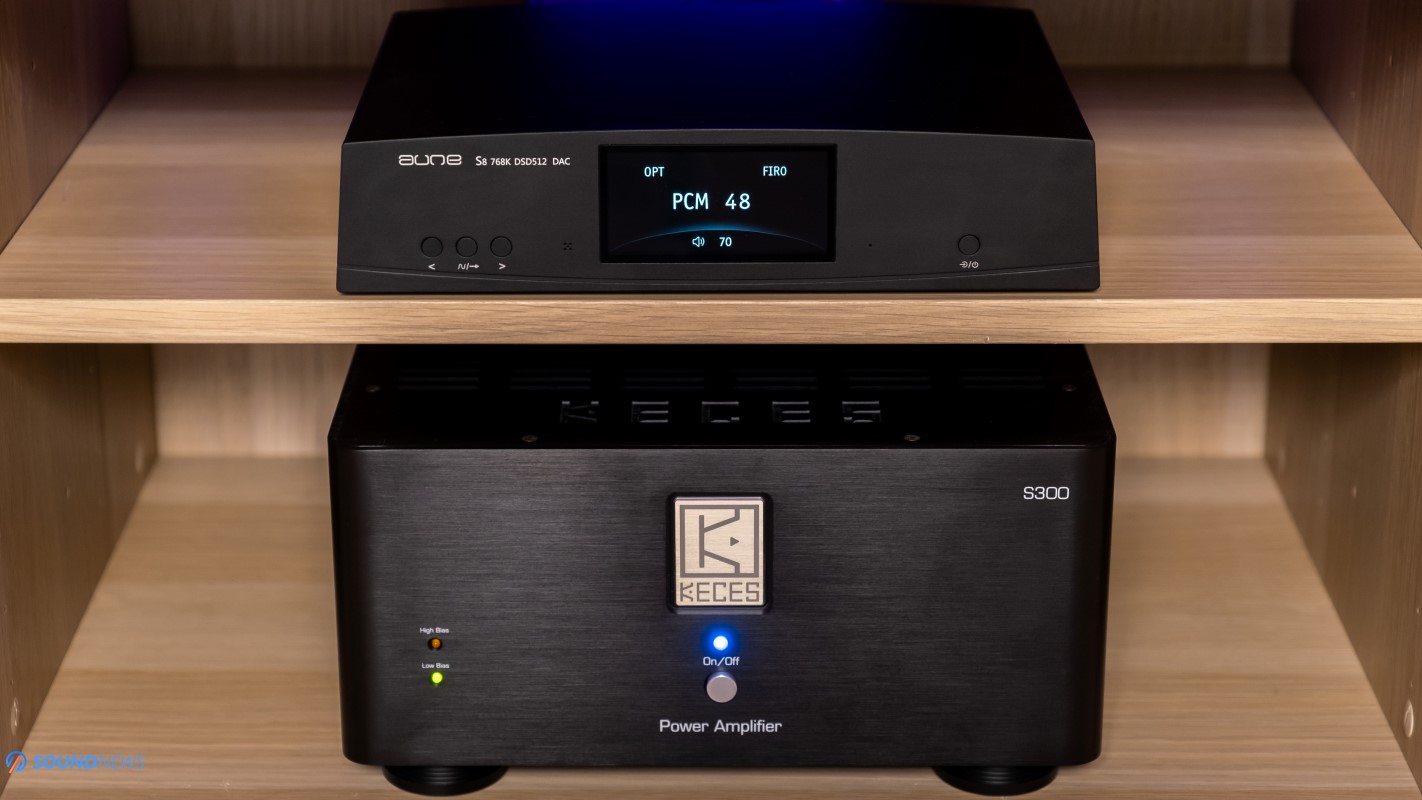
V. Soundstage & Depth
This is where I moved it to the living room, I’ve connected it directly to a KECES S300 power amplifier and then to a pair of Buchardt S400 loudspeakers, I’ve grabbed a drink and let the music fill the room nicely. Pin point location of all the notes around me is very precise and I feel them without stressing myself too much. I’ve sensed a bigger sound with air filling the gaps in the room nicely. Aune S8 is among the nicest ESS-Sabre units that offers a nice depth where I feel some musicians closer to me, some farther away from me and some exactly in the middle creating an imaginary 3D map inside my head.
Liberty by Anette Askvik (Tidal / Spotify) is an amazing example with notes coming from all possible directions. It starts slow and mellow but at some point, more sounds are rushing in, where S8 placed them in their own air bubbles, increasing the void spaces between all those notes. S8 was able to create a believable sound that breathes, that is extended and that decays at the right moment. The saxophone at the end sounds so unreal with a long, lush and smooth trail and echo. It sounded textured and palpable; I almost didn’t believe I was listening to a D/S DAC. Anette’s voice was also scary real, it is perfectly centered and while there are plenty of sounds around her, they all pointed their fingers towards her voice. You can easily test the soundstaging capabilities of your speakers or headphones with a song like this, give it a spin.
Aune S8 is a true balanced DAC with a lower channel crosstalk via its XLR outputs and when I’m switching back to a headphone setup, the left to right soundstage is increasing in size too, simply because both channels are not interfering with each other as much as they are doing via RCA outputs. That is a non-issue in a speaker setup for obvious reasons, as I can hear with my left ear what is coming from the right speaker, but with headphones you don’t want the left channel leaking in the right channel and that is precisely why XLR output is a god-sent in a headphone setup.
Listening to the remastered masterpiece of Eagles – Hotel California (Tidal / Spotify), even with headphones on my head I can easily discern that everything happens in a huge auditorium with tall walls much farther away from the musicians. There is a longer travel with every note, a longer decay so to speak, that translates into a much bigger sound that simply envelops my entire body. I’m never getting bored of listening to this kind of performance, its mastering is top notch and everything is crystal clear sounding with notes flying freely around your head, simply close your eyes and catch them as butterflies.
I want to outline that S8 will not increase or decrease the stage size of your recordings, if they are meant to sound big, they will sound big and vice versa. It will not intervene in any way. The most important thing to know is that airy and open-wide recordings will remain that way, its power filtering and storing is pretty solid, it will not limit or decrease the stage size or depth information by itself and that is all you need to know.
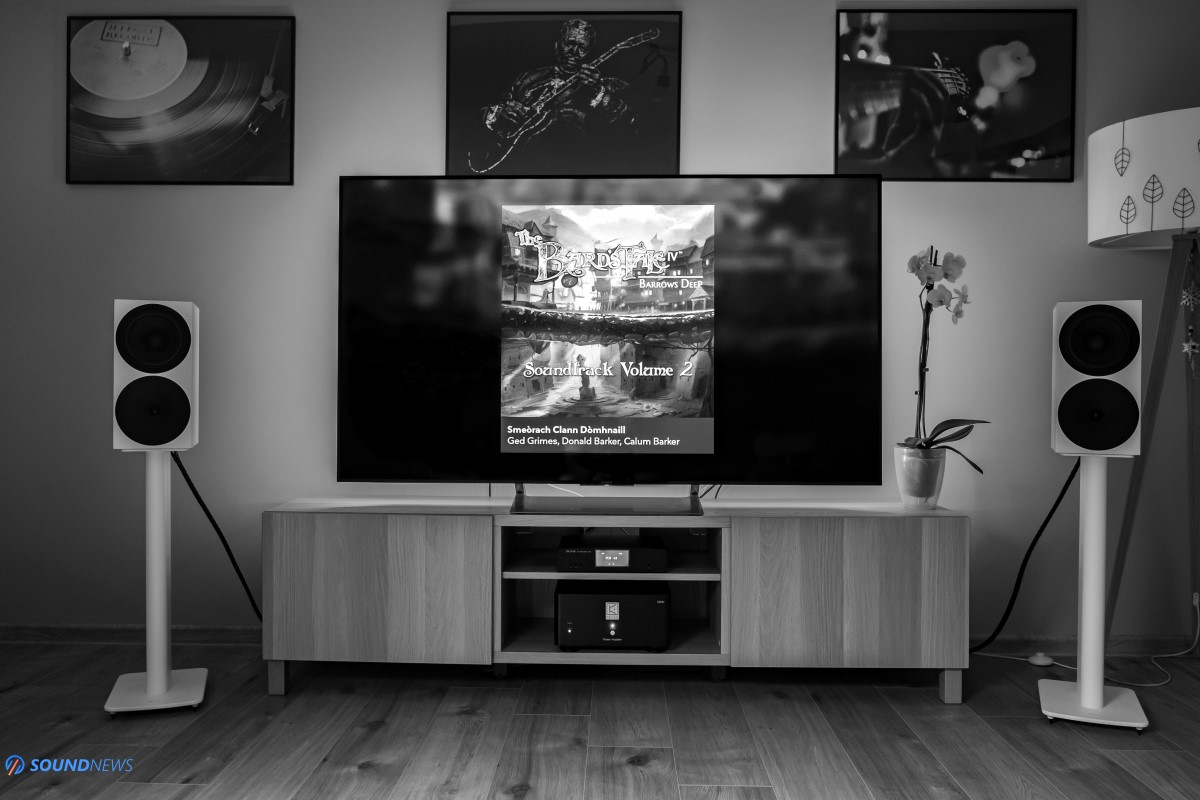
VI. Frequency Response
This is where I’ve got back listening to high-end headphones that are capable of rendering everything in our hearing range. S8 is a transparent sounding unit so writing about its tonality and frequency response (FR) is an easy task.
S8 is very reminiscent of my own unit as I didn’t hear roll-offs, dropout or rises in the FR. Its sub-bass is beyond awesome, I’ve actually listened to a lot more electronica and rock tunes with this one as I couldn’t get enough of that fat ‘n juicy bass response. With amplifiers like Flux Labs Acoustics FA-10 it is simply bottomless, it extends down low, it is fast and controlled sounding to the last note. Bass performance is actually one of the best traits of this DAC. I’m not sure what is at play here, but it reminds very much of my reference unit. Mid-bass is exactly the same, being always alive, nimble, hard hitting and extremely clean sounding. Bass is extremely hard to control, to maintain and decay naturally, S8 with the amplifier that followed had an iron grip over the drivers and a lightning fast presentation. S8 prefers a faster pace and cleaner type of bass, in detriment of a one-note bass performance. DACs are not made equal, some of them are barely Okay with electronica music, but S8 passed this test exceptionally well. I’m hearing a nice extension; it is defined and full sounding without spilling over the midrange area.
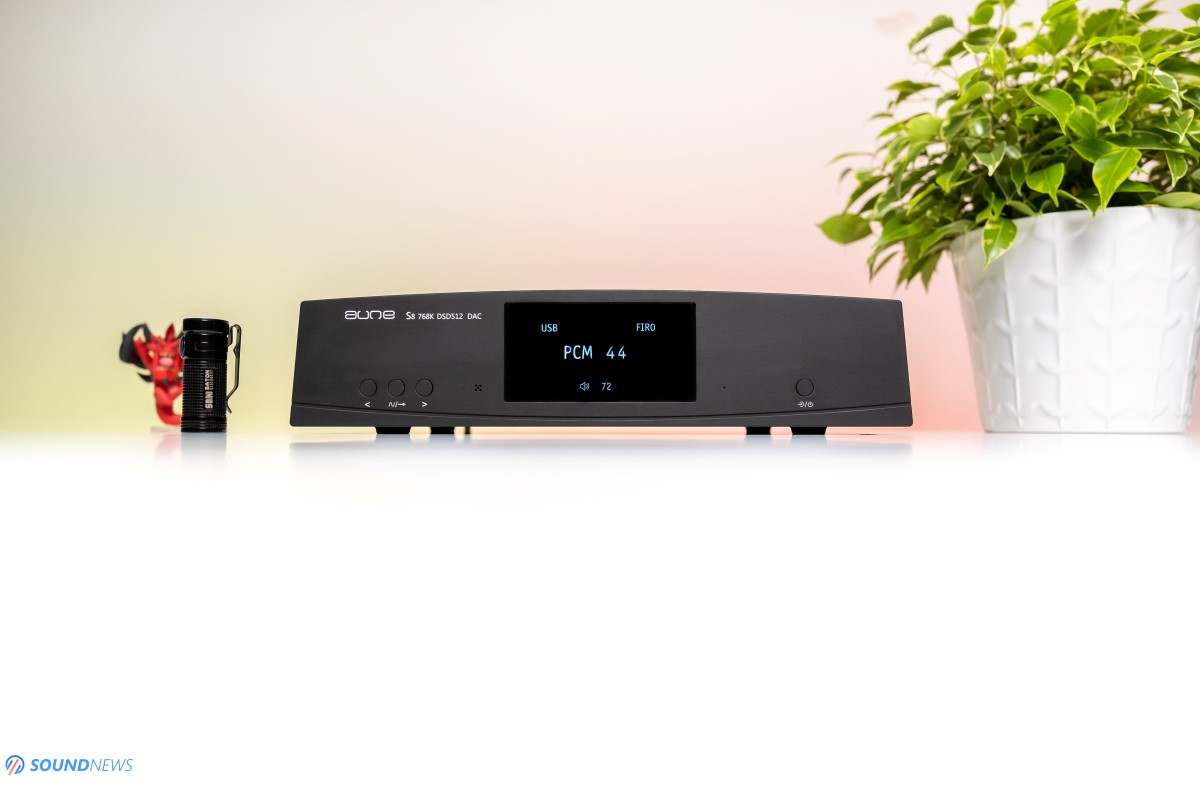
Midrange felt linear and deep sounding too, it had a natural pitch, male and female voices sounded life-like carrying just the right amount of weight to them. I want to add that if you want some tube warmth or smooth sounding midrange, then S8 is not like that by any means. It doesn’t have a dense or soul-grabbing midrange, on the other hand it is far from thin, boring or lifeless sounding. It is…somewhere in the middle, tilting only by a hair towards naturalness and fullness. Its midrange performance is very reminiscent of Matrix Element X and Topping D90 that are far from harsh and bright sounding. It is actually one of the nicest ESS Sabre DACs that still has some meat on the bone and it certainly grabbed my attention with its midrange presence.
Treble is limitless and extended even past top octave, you can hear it vibrating and shimmering past that region. Cymbal crashes and snare drum hits felt very real, especially with Hifiman Susvara it was like drum stick were directly hitting my eardrums. Bells were ringing nicely; tambourines had a real texture without sounding edgy and bright. S8 is very potent in here and if you are a treble-head, S8 will let you discover all the smallest nuances in this region. The absolute best part is that S8 does this without jumping to the bright side. There is a very thin line between being linear and bright, but S8 never crosses it, it is just detailed and extended in here without offering any kind of digitus or harshness, I really like it in here.
Overall, I felt a good tonal balance and Aune S8 was able to offer a decent dose of naturalness, midrange presence, a lot of micro-details in the treble and plenty of bass authority down low. I wish more D/S DACs would have a nice balance between being technical and natural sounding at the same time.

VII. Comparisons
I will be comparing the sound of Aune S8 with a DAC + Pre + Headphone amp combo that I have tested not too long ago, it is more expensive and more feature packed, but we’ll have a small surprise at the end of this comparison.
Aune Audio S8 ($998) VS Burson Audio Conductor 3X Performance ($1399)
In terms of build quality, both are nice looking units made from aluminum on CNC machines. 3XP has slightly thicker panels and it looks considerably more industrial and rawer around the edges. 3XP has a raw aluminum finish, which I think looks quite unique and interesting. Both are hiding the screws for a simple and elegant look. S8 looks a bit more refined, like modern furniture, where 3XP looks like it was made by an engineer instead of a designer. Both units are using monochrome screens which is pretty cool to look at, 3XP has it smaller but brighter which might pose a problem in the living room. S8 is considerably wider and it is heavier too, but since it houses a linear toroidal transformer and a higher number of capacitors, that shouldn’t come as a surprise.
In terms of I/O, Aune S8 is making huge steps forward as besides USB, optical and coaxial on 3XP, it also has I2S and AES professional grade inputs. As for the outputs, on S8 both RCA and XLR can be variable or fixed, whereas 3XP has a variable RCA and a fixed XLR.
In terms of features, 3XP was the final victor as besides working as a DAC and preamp, it also houses a super powerful headphone amp section that is fully-balanced and all-discrete based on their V6 Vivid discrete op-amps. 3XP can also work as a Bluetooth receiver and it supports all the best codecs available, including LDAC and AptX-HD. I used the same balanced interconnects with both units, same power cables, same amplifiers, speakers and headphones.
In a speaker-based setup, I liked Burson creation more as it actually houses a line-amplifier instead of a digital attenuator as Aune unit does. It was slightly more visceral and more impactful sounding; it was more engaging and alive; it has more midrange presence and even more bass down there. 3XP felt warmer sounding, it was pounding harder at the expense that it didn’t sound as transparent and detailed, it was losing the last bits of information and that was very obvious with reference recordings. It was very clear to me that 3X Performance was a better preamplifier and as such it sounded better in a speaker-based setup.
3XP has also its own headphone amplifier section and a very good one too, it was able to drive absolutely everything except for Hifiman Susvara. When I moved both to a headphone setup, disabling their preamps and let them work as pure DACs connected to a Benchmark HPA4/Flux FA-10 and then driving 4 individual headphones, I was really surprised by the outcome. Aune S8 came up as cleaner, more transparent and more detailed sounding starting with bass and finishing with the treble. With it, there was more of everything, I was hearing the smallest nuances in my music and everything felt extra tight sounding, super controlled and accurate.
When Burson started playing, I felt that background became slightly dirtier, it wasn’t as clear, details took a step back too and instead it was pumping more mid-bass and midrange presence. Where S8 felt extremely linear and extended top to bottom, 3XP felt warm and smooth, rounding by a very small margin both frequency extremes. 3XP had less sub-bass information and less upper-treble information. As a pure DAC device, Aune S8 was in a higher league and performed as a very serious unit. It indeed works best as a DAC only device, it simply excels in this area and that was felt with every headphone or loudspeaker.
Burson unit is interesting as an all-in-one device, it is extremely versatile and if you want slightly more mid-bass and midrange presence, carrying a warmer tone, then it should work better in your setup. In terms of features the Burson was clearly a better device. If you own a power amplifier and some passive speakers, it worked better as a preamplifier.
As pure DAC device, Aune S8 was the undefeated champion in the arena. I was quite surprised, as I didn’t expect to hear a big difference between them. Aune S8 was always linear, always straight as a line, extended in FR, transparent, detailed, airy and open wide sounding. Aune S8 is by about $400 cheaper and yet it performs on a higher level as a pure DAC unit. If you already own a very good integrated amplifier with volume control or a good headphone amplifier, then S8 can be taken seriously as a great sounding DAC.
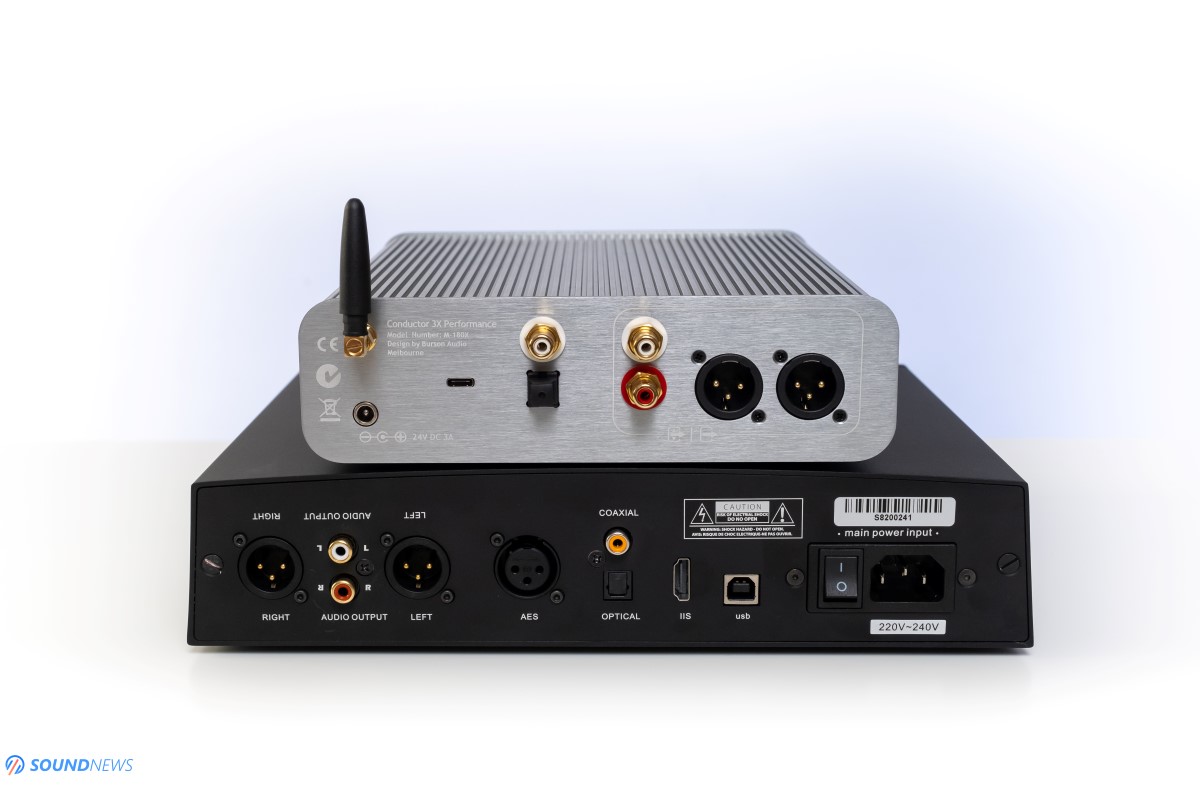
Conclusion
With S8, Aune Audio took their former best DAC, they added the best commercial DAC chip, put a custom-made high-end master clock, upgraded its USB interface with another set of femtosecond clocks, they added a stable XMOS chipset and some custom Thesycon drivers for an immaculate performance. Aune S8 followed every rule a serious DAC should possess, even power supply and filtering were raised at a very high level. There are only two things I wish it had, so I would call it a giant killer: a full-MQA decoder and a Bluetooth receiver capable or LDAC and AptX-HD – these features would make it perfect for me.
As a statement product, it performed admirably on every key aspect, it followed my strict linearity curve with an extended frequency response and by sounding extremely clean and transparent. Background noise was nowhere to be found even with ultra-sensitive loads as IEMs. In a speaker-based setup it should work best with an integrated amplifier than with a power amplifier, mostly because it uses a digital attenuator instead a dedicated line-amplifier.
As a DAC only device, I really don’t have much to complaint about. I’ve tried my best, I’ve tried hard and all I’ve heard back was a DAC that doesn’t color my music, that doesn’t want to make it bigger or smaller, it only wanted to disappear from my acoustic chain and let the music say the last words.
Aune S8 is an expensive DAC, but considering its immaculate performance as a DAC only device, I cannot go without recommending it as a great sounding unit. Aune S8 will cost you $998, it was kindly provided by HiFiGo and it can be purchased from their web-store by following this link.
PROS:
- Sleek looking device, simply beautiful
- Great build quality
- Linear tonality and very extended in the FR
- Impressive resolution and transparency
- Great pin-point location of all the notes around the listener
- Airy sounding, good soundstage and depth
- Excellent dynamics, having a great pace, rhythm and timing
- Noise-free even with ultra-sensitive loads
- Rich and full-bodied with the right gear and music
- Wide selection of digital inputs and analog outputs
- Disappears from the acoustic chain
- Great overall performance as a pure DAC unit
CONS:
- Its preamp section could be better
- Lacking additional featured of its competition (a MQA decoder and a Bluetooth receiver)
ASSOCIATED EQUIPMENT:
- Sources: Xiaomi Mi 9T Pro, Corsair One i160
- DACs: Aune Audio S8, Burson Conductor 3X Performance, Audiobyte HydraVox + HydraZap, Matrix Audio Element X, Flux Lab Acoustics FCN-10
- DAPs: Shanling M6, FiiO M15
- Headphone Amps: Benchmark HPA4, SparkoS Labs Aries, Flux Lab Acoustics FCN-10, LittleDot MKIII SE
- Integrated Amps: KECES E40
- Power Amps: KECES S300, S125, Kinki Studio EX-M7
- IEMs: FiiO FA9, FH7, Meze Rai Penta, Rai Solo & lots of other lower tiered ones
- Portable headphones: Sennheiser Momentum 2, Meze 99 Classics
- Wireless headphones: Sony WF-1000XM3, Sennheiser Momentum 3, Master&Dynamic MW65
- Full-sized headphones: Hifiman Susvara, Hifiman Arya, Audeze LCD-4, Erzetich Phobos, Quad ERA-1, Ollo S4X Reference, Fostex TH909, Kennerton Wodan, Magni & Gjallarhorn
- Loudspeakers: Buchardt S400
- Interconnects: QED Reference (x2), Aune AL3
- Speaker cables: Kimber PR8, Audioquest Type4
- Power Cables: Isotek EVO3 Premier (x3)
- Balanced Isolation Power Conditioners: PLiXiR Elite BAC400, KECES BP-600
